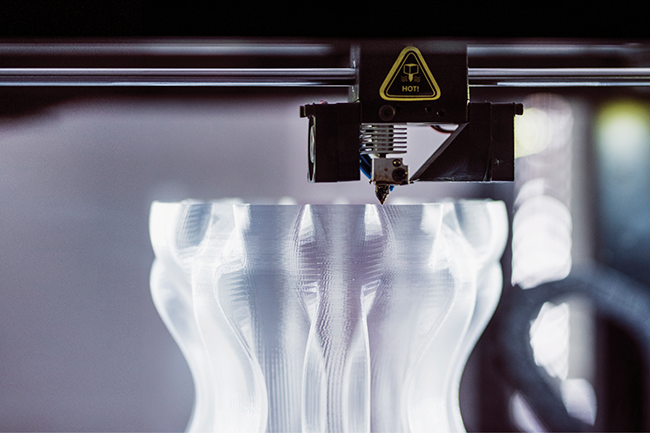The way the story is told, IBM founder Thomas J Watson was sitting in an especially uninspiring sales meeting in 1911, when something inside him snapped. ‘The trouble with every one of us,’ he said, out of the blue, ‘is that we don’t think enough. We don’t get paid for working with our feet; we get paid for working with our heads.’ Watson then stood up, walked to the front of the room and wrote on the board – in big block capitals – that single word: ‘THINK’.
Decades later, in 1997, IBM’s great computing rival Apple went one better, with a cheeky (and grammatically troubling) advertising campaign that said, simply, ‘Think different’. As the Information Age hurtles mercilessly towards the Fourth Industrial Revolution, thinking – and thinking differently – has become essential for a business’ survival. Those that can adjust, inspire and innovate are thriving, while those that can’t are dying fast and horrible deaths.
For large corporates, the challenge lies in being agile enough to lead (or at least respond to) innovation… But agility isn’t a term often associated with large, established organisations. And while big organisations are often like aircraft carriers, which take time and effort to change course, SMEs are like jet skis that can move sharply and quickly.
It’s no accident that most of the focus at the SA Innovation Summit, held at Cape Town Stadium in September, was on start-ups. ‘The technology and start-up space is under-funded in Africa, yet it yields the greatest results in any economy over time,’ SA Innovation Summit chair Audrey Verhaeghe said ahead of the event. ‘In the UK, every [one] pound spent on innovation and tech start-ups yields nine to the economy. Africa still needs to leverage this potential return in its emerging economies. The summit serves as a catalytic event that strengthens and builds the tech start-up sector. We have evolved into Africa’s biggest and most exciting tech start-up event on the calendar and this year will be no different.’
But is innovation the sole preserve of start-ups and SMEs, or are start-ups and SMEs just much better at it than big companies? The answer to the first question is a resounding no. The SA Innovation League, launched by Innocentrix and Milpark Business School, ranks and recognises South African organisations – both large and small – for their ‘innovation readiness’. With categories for emerging organisations, along with small, medium and large organisations, the list of winners ranges from small companies, Niche Integrated Solutions, among them to multinationals such as Vodacom and FNB.
Speaking at the awards ceremony in mid-2018, Innocentrix CEO Henra Mayer said: ‘It was great to see a statistically significant improvement in innovation capability across all pillars. It is evident that we are systematically growing an innovation capability as a country. The results demonstrated that locally our emerging enterprises were the most innovative, whereas our medium-sized organisations were ranked as least innovative.’
But while very big and very small organisations appear to be (more or less) equal leaders in innovation, small businesses are, by their nature, well positioned to lead in innovation. In the recent GoDaddy Global Small Business Research Survey, 70% of respondents said they felt protected against job loss from technology developments such as the rise of automation, AI and robot disruption.
The survey – conducted in 10 countries, including South Africa – also found that 48% of South African small-business owners regard flexibility as the best aspect of being an entrepreneur, with 91% of South African respondents saying they would start their own business if they had to make the choice again knowing what they know now. Some 84% reported being happier since becoming an entrepreneur.
Would the results be the same for people working in a massive, monolithic corporate? Probably not. ‘Big companies have a right to be jealous of small ones,’ says Ian Mann, a partner at Gateways Business Consultants who specialises in strategy and leadership. Mann argues that businesses structured like machines will run like machines, with rigid structures and with parts that can easily be replaced. ‘But big businesses don’t have to be rigid,’ he says. ‘Large organisations that have a cellular structure – like you have in your body – are designed to be very agile. Your heart doesn’t send messages to your brain asking if it can pump faster; it just does. In a cellular organisation, if you’re having a problem with the guy in finance because he won’t give you the budget to hire the new staff member you really need, you won’t go to see the CEO; you’ll go and see the guy in finance, and the two of you will sort it out together. When you structure a business like that, it can be as agile as a tiny business.’
Agility is necessary for survival in the current market because, while emerging technologies are critical to business innovation, they can be hard to time correctly. Businesses that adopt a ‘wait-and-see’ approach to new technologies are finding themselves left behind – especially by opportunities that appear deceptively slowly before suddenly exploding into commercial use. (Consider AI, which has been brewing as an idea for decades and has sprung suddenly into mainstream use.) In other words, even if your organisation is able to think – and think differently to your competitors – it won’t help if you don’t act on innovation, and act quickly.
Salomé van Coller-Peter, head of the MPhil coaching management programme at the University of Stellenbosch Business School (USB), urges big businesses to harness the entrepreneurial spirit of their existing employees, driving innovation and promoting new ways of thinking by encouraging and rewarding ‘intrapreneurship’. She points to a handful of examples of game-changing innovations that emerged – often by accident – from within the corporate workforce. The PlayStation gaming console (developed in secret by then Sony employee Ken Kutaragi) and the Post-It note (the result of a failed adhesive and an employee’s need for a sticky bookmark) are just two such cases.
Van Coller-Peter says successful intrapreneurship relies on individuals who have the right ‘natural ability, personality, curiosity and guts’, as much as on enabling corporate environment. ‘If innovation through intrapreneurship is to be more than a one-off lucky break, then encouraging it must be a decision made and supported by top management,’ she says. ‘It must be organisation-wide and institutionalised, with an empowering environment that fosters a culture of co-creativity – allowing for risks to be taken, within boundaries, and mistakes to be made – and offering worthwhile recognition or reward.’
FNB is an example of a big company that has done this with some success. In 2017 the South African-based bank awarded more than ZAR10.5 million to employees who came up with ‘game-changing innovations’ that would provide better service to customers. The company’s FNB Innovators 2.0 programme awarded in excess of ZAR50 million to staff in the years after its launch in 2004, and the bank claims it has implemented at least 10 000 employee-generated ideas.
As the Fourth Industrial Revolution kicks in, and as technologies become integrated into processes, businesses will shift towards a flatter organisational structure, and intrapreneurship will become common practice. Munozovepi Gwata, founder of financial education platform Kukura Capital, writes in a recent opinion piece for the WEF that digital technologies have allowed entrepreneurship to become a more accessible source of revenue, and the perception of business should change to match this transformation.
‘Entrepreneurship traditionally was not a very accessible career option, as it was an expensive and extremely high-risk career path,’ she says. ‘However, with developments in technology and with third-party platforms such as Etsy, Shopify and Amazon, people have easier, low-cost means to sell and market their products and services. Entrepreneurship is shifting towards a low-risk, high-return game versus a high-risk, low-return environment.’
Gwata adds that the Fourth Industrial Revolution requires that people become more entrepreneurial in their approach to employment. ‘This new spirit can be exercised indirectly by being an intrapreneur – an employee who works for someone else but embodies the entrepreneurial spirit of being innovative and seeking continuous improvement of the things around them – or directly as an entrepreneur,’ she says.
After all, if entrepreneurs are innovative by nature, and if big businesses need agile thinkers now more than ever, it makes sense for those same businesses to attract and encourage those same entrepreneurs. All they need to do is think differently.





